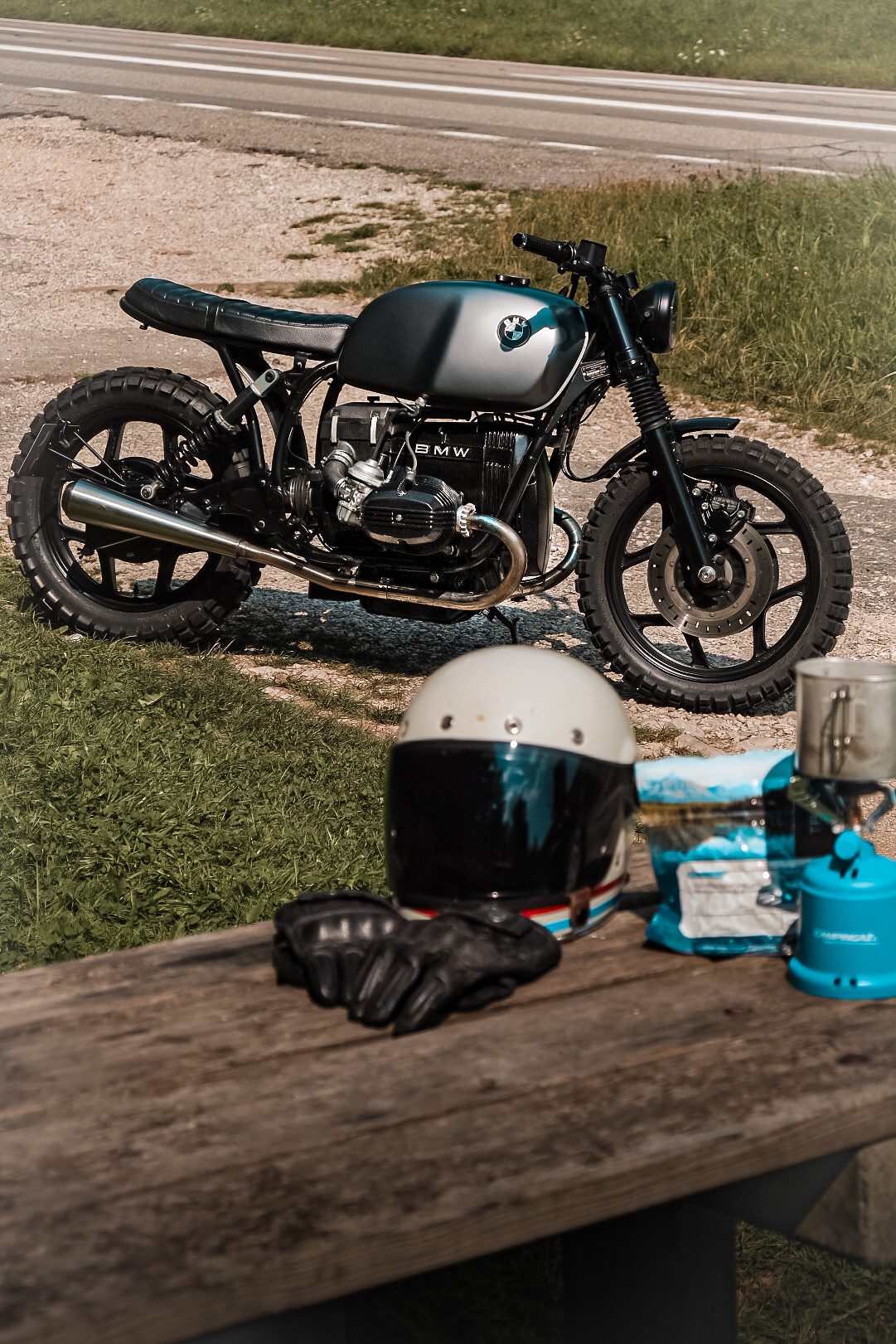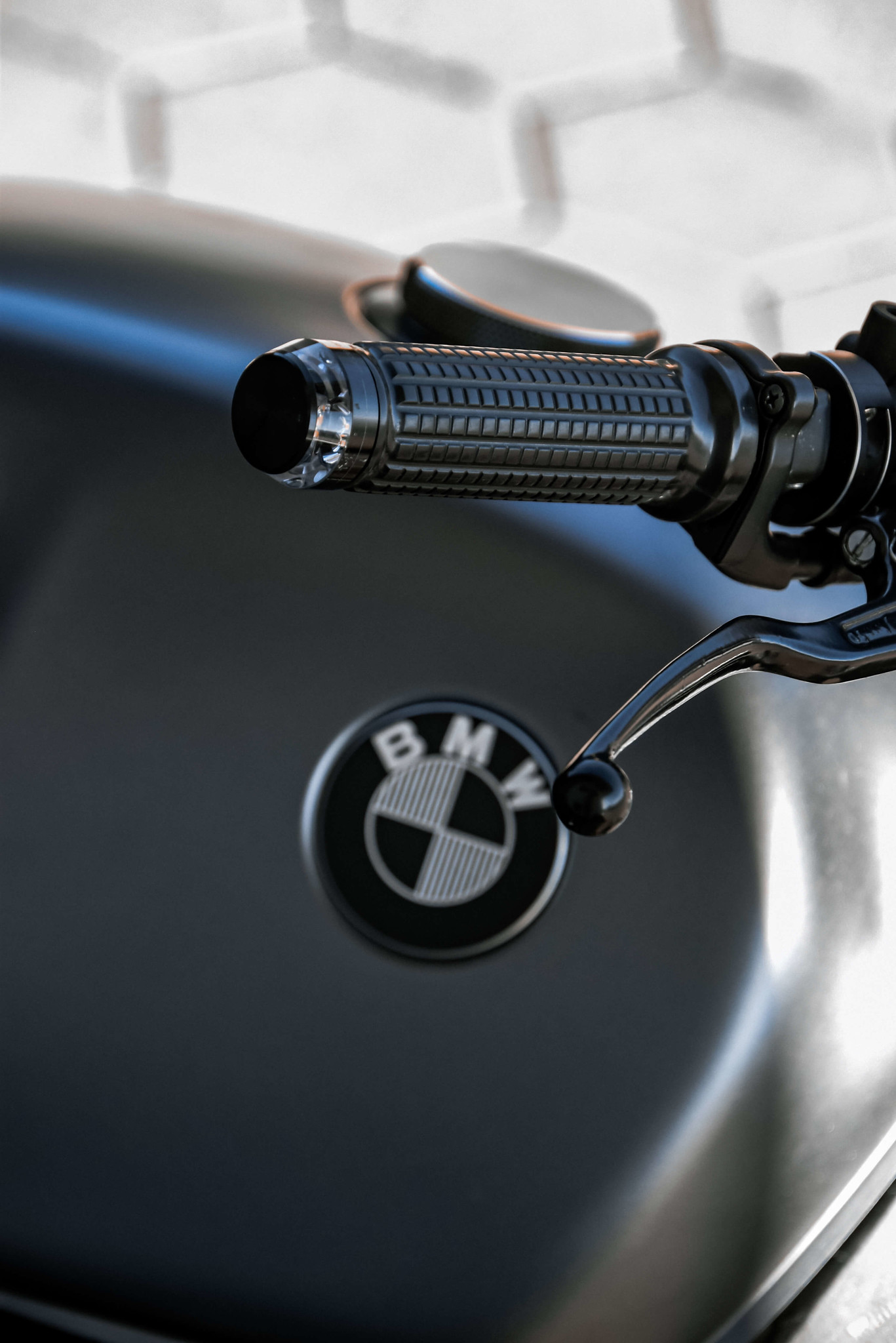My name is Camille, I am 27 years old and a trained precision mechanic from Switzerland. With an interest in technology and motorbikes, it didn't take long for me to get a taste for BMW Boxer engines. I am fascinated by the simple, reliable and practically indestructible technology of the engines. In addition, there is the incomparable look that sets the machine apart from other motorbikes with its two cylinders protruding from the side. My goal was to combine old technology with modern technology.
Buying my first BMW R80 RT
In the winter of 2019, I bought a BMW R80 RT from 1987, with around 95,000 KM. The bike was visibly getting on in years, but technically in good condition. Originally, I wanted to realise a simple conversion on a small budget. After dismantling the first casing parts and exposing the frame, I quickly realised that I would need more time and money than originally planned.
Engine and chassis
The cylinders, heads and covers were overhauled by Motoren Israel. To be precise, the cylinders were honed, the valves replaced and stainless tappets protection tubes pressed in. As a finish, I blasted the whole engine with glass beads and painted it with a black 2K lacquer. The suspension fork was completely overhauled and shortened. This gives the bike more stability under heavy braking manoeuvres and therefore better handling. The old and soft shock absorber on the rear axle was replaced by a new Wilbers shock absorber. The frame was fitted with a lot of rust due to winter riding and salt on the road. To make a clean job I had the whole frame sandblasted and powder coated again. The long original bolted rear frame was replaced by a short version.

Electrical system BMW R80 caferacer
After 32 years, the wiring harness was no longer what it used to be. After a lot of research on the internet, I came to the conclusion to use the Motogadget mo.unit blue as a replacement and reconfigure the entire wiring harness. Now my motorbike works with keyless go via Bluetooth from my mobile phone. As a safety measure, if the mobile phone battery should run out, I have connected an M-Lock with RFID technology. The lights have all been replaced by LEDs. For the front turn signals, I used Motogadget M-Disc handlebar turn signals and Kellermann Atto DF 3 in 1 at the rear. For the Highsider headlight, it was important to me that an LED light ring was visible. The mount for the headlight was cut from aluminium sheet, bent and powder-coated. All electrical components are supplied with sufficient power by the LiPo battery, which I placed under the gearbox.
Handlebars and brakes
For the handlebars, I wanted to have a high-quality, clean and tidy a look as possible. The wiring for the Motogadget buttons and indicators was routed through the handlebars. The small and simple Motogadget tiny speedometer completes the look in the cockpit. To optimise the braking performance, I replaced the old hand brake cylinder with a new optimised version from Brembo.
Fuel and exhaust gas
Due to the boarding, the tank had a dent in some places. For this reason, the tank was repaired with filler and sanded over before painting. The 2K selenite grey paint was done according to the same colour code as the Mercedes AMG cars. The carburettors were completely overhauled and resealed. In order not to interrupt the line of the bike, I decided to use a long-drawn Hattech exhaust system.
Modifications made on the BMW R80 Caferacer:
- Frame blasted with glass beads and powder coated
- Fork revised and shortened
- Old shock absorber replaced by new Wilbers shock absorber
- Cylinder, cylinder heads and cylinder covers overhauled
- Engine & gearbox blasted with glass beads, repainted
- Wiring harness rebuilt, mo. unit control box, M-Lock RFID
- LiPo battery under the gearbox
- Motogadget M-Disc indicators front and Kellermann Atto DF 3 in 1 rear
- Handlebar fittings motogadget m-switch
- Highsider LED headlight
- Tank painted in the colour selenite grey
- Carburettor overhauled and recoated
- Old handbrake cylinder replaced by new Brembo one
- Short rear frame installed
- Exhaust system Gunball brand Hattech
















